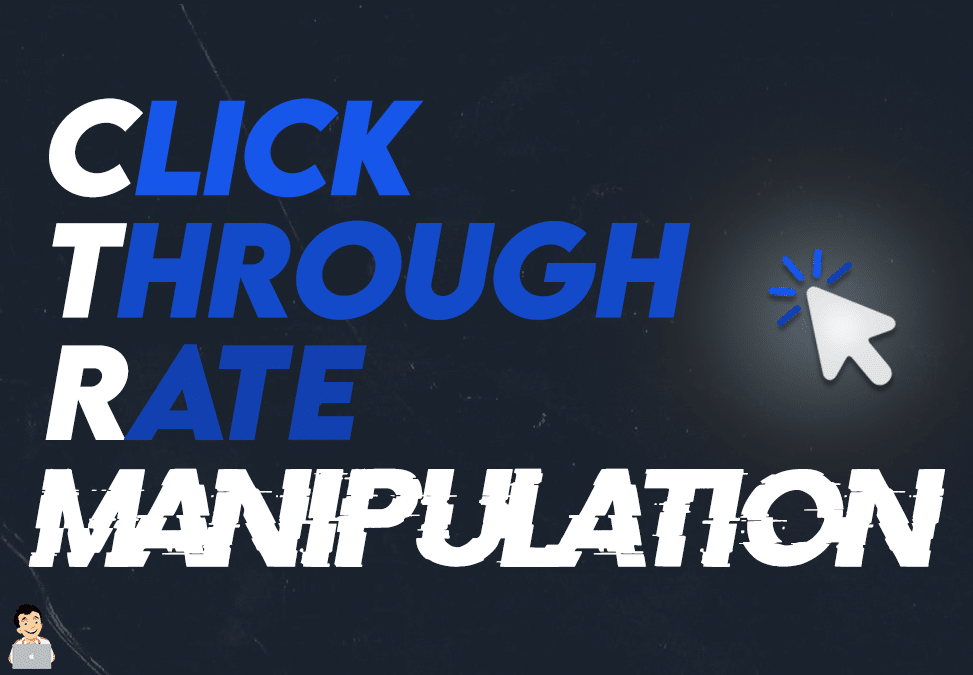Maximize Your Brand's Presence Through Strategic CTR Manipulation Press Release
Wiki Article
Attaining Success With Targeted CTR Adjustment
The optimization of click-through prices (CTR) is a critical venture for brand names intending to enhance their electronic presence and make best use of engagement. Targeted CTR control includes a range of strategies, from data-driven ad positionings to the development of compelling web content customized to certain target markets.Recognizing Click-Through Fees
Click-through rates (CTR) work as a crucial metric in digital advertising and marketing, mirroring the efficiency of on-line web content in driving user involvement. This statistics is determined by splitting the number of clicks an advertisement or web link receives by the complete number of impressions, shared as a percentage (CTR Manipulation Service). A higher CTR suggests that the material resonates well with the target audience, triggering them to do something about itRecognizing CTR is essential for marketing professionals aiming to maximize their campaigns. Different elements affect CTR, consisting of advertisement placement, layout, and the importance of the material to the target market's interests. Compelling headings and aesthetically appealing images can dramatically enhance the chance of users clicking on a link.
In addition, the context in which the content is provided plays a crucial role in determining CTR. Inevitably, a detailed understanding of CTR empowers marketing experts to fine-tune their techniques, guaranteeing that electronic campaigns attain their desired end results successfully.
Importance of CTR Control
In the affordable landscape of electronic advertising, the control of click-through rates (CTR) has actually become an essential method for boosting project efficiency. CTR functions as a vital efficiency sign, reflecting the effectiveness of online promotions and material in bring in user interaction. A higher CTR not just symbolizes better rate of interest however also can bring about enhanced search engine rankings and reduced cost-per-click (CPC) prices, therefore maximizing overall advertising budget plans.The relevance of CTR control exists in its capacity to notify marketers concerning consumer preferences and behaviors. By analyzing CTR data, services can recognize which components of their projects resonate most with their target market. This understanding permits for even more educated decision-making and the allowance of resources to one of the most efficient channels.
Additionally, reliable CTR adjustment cultivates a competitive benefit. Thus, understanding CTR control is not just helpful; it is crucial for accomplishing sustained success in electronic marketing efforts.
Methods for Targeted CTR
Attaining targeted click-through prices (CTR) calls for a tactical approach that includes different methods customized to specific audience segments. One reliable technique is optimizing advertisement positionings by using data analytics to recognize high-performing channels. By concentrating initiatives on these channels, marketing experts can boost visibility and rise engagement.One more important method is crafting compelling headlines and calls to action (CTAs) A/B screening different variants can disclose which combinations resonate most with the target audience, thereby driving higher CTR. Additionally, incorporating visual aspects such as captivating images or videos can considerably enhance allure, making content much more shareable and appealing.
Personalization likewise plays a crucial duty; using customer data to produce customized content can cultivate a feeling of relevance, encouraging clicks. Leveraging social evidence through testimonies and user-generated material can develop trust fund, eventually increasing CTR.
Studying User Habits
 Recognizing customer behavior is essential for enhancing advertising and marketing approaches and boosting total efficiency. By analyzing how individuals engage with web content, marketing professionals can obtain useful insights into choices, motivations, and pain factors. This expertise allows the advancement of more targeted campaigns that reverberate with specific target market sections.
Recognizing customer behavior is essential for enhancing advertising and marketing approaches and boosting total efficiency. By analyzing how individuals engage with web content, marketing professionals can obtain useful insights into choices, motivations, and pain factors. This expertise allows the advancement of more targeted campaigns that reverberate with specific target market sections.To properly analyze individual habits, various tools and techniques can be utilized. Web analytics platforms give data on customer engagement metrics such as click-through prices, bounce prices, and time spent on page. Heatmaps and session recordings permit marketing professionals to picture individual interactions, revealing which elements stand out and which may be ignored.
Furthermore, individual comments through studies and responses forms can offer qualitative insights, enhancing the understanding of customer belief and complete satisfaction. Segmenting individuals based upon habits, demographics, and passions can further fine-tune targeting efforts, tailoring web content to satisfy diverse demands.
Ultimately, constant analysis of individual actions is crucial for adjusting marketing approaches in real-time. As user trends evolve, staying attuned to these changes guarantees that campaigns continue to be effective and relevant, cultivating a deeper link with the target market. This foundational understanding sets the stage for the successful implementation of targeted CTR manipulation strategies.
Measuring Success and Changing Techniques
Measuring success in targeted advertising campaigns needs a calculated technique that integrates efficiency metrics with ongoing analysis. Key efficiency indicators (KPIs) such as click-through prices (CTR), conversion prices, and client purchase expenses need to be monitored constantly to determine the effectiveness of adjustment approaches. By developing a baseline, marketing professionals can assess changes in CTR and identify trends that indicate effective engagement or prospective shortcomings.Consistently evaluating these metrics enables the prompt change of methods. If a specific campaign shows a considerable decline in CTR, it may signal the demand for innovative modifications or a reevaluation of targeting criteria. Utilizing A/B screening can further improve approaches by contrasting variants of advertisements or touchdown web pages, providing insight into what resonates finest with the target audience.
Furthermore, integrating qualitative comments via studies or user interviews can supplement quantitative information, offering a detailed sight of target market perception. Eventually, the capacity to iteratively analyze and refine approaches based on real-time information promotes an extra responsive advertising and marketing approach, making sure that projects continue to be aligned with organization goals and audience choices. This adaptive approach is vital in attaining continual success in targeted CTR manipulation.
Final Thought
Finally, targeted CTR adjustment is crucial for enhancing electronic marketing efforts. By recognizing click-through rates and using strategic techniques, brand names can efficiently improve customer involvement and drive conversions. Constant analysis of individual behavior and diligent dimension of efficiency signs promote timely adjustments, making certain placement with consumer preferences. Eventually, effective CTR manipulation not only raises exposure however additionally fosters depend on and credibility, consequently CTR Manipulation Press Release adding to sustained development in affordable markets.
 Targeted CTR control encompasses an array of approaches, from data-driven ad placements to the growth of engaging material customized to particular target markets.Click-through rates (CTR) serve as an important metric in electronic marketing, reflecting the effectiveness of on the internet web content in driving individual interaction. A higher CTR suggests that the content resonates well with the target audience, motivating them to take activity.
Targeted CTR control encompasses an array of approaches, from data-driven ad placements to the growth of engaging material customized to particular target markets.Click-through rates (CTR) serve as an important metric in electronic marketing, reflecting the effectiveness of on the internet web content in driving individual interaction. A higher CTR suggests that the content resonates well with the target audience, motivating them to take activity.CTR offers as a key efficiency indication, mirroring the efficiency of online promotions and web content in bring in individual engagement.In conclusion, targeted CTR control is important for maximizing electronic advertising initiatives.
Report this wiki page